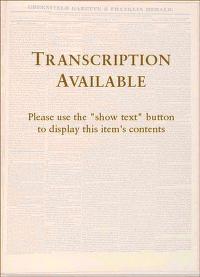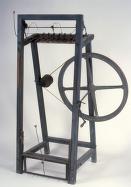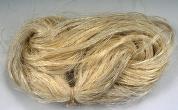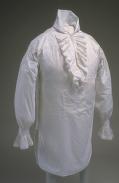|

Lamson, Goodnow and Company, Birds-Eye View

"Lowell" article regarding cotton mills from Greenfield Gazette and Franklin Herald newspaper

"Historical Collections, being a General Collection of Interesting Facts, Traditions, Biographical Sketches, Anecdotes &c.",

Spinning Jenny

Raw Silk

Man's Shirt

Man's vest
|
Summary and Objective
Students will understand that the growth of the Industrial Revolution in America was based on the textile industry (as well as paper and other manufactured goods) that developed in mills that were built along water ways in Lowell, Northampton, and throughout the Connecticut River Valley by examining photos, drawings and documents.
Teaching Plan
Step 1.
Have students view the photographs of the mills and factories from Shelburne Falls (Lamson, Goodnow and Company, Birds-Eye View), Pawtucket (Slater's Mill 1793), Lowell (Boott Cotton Mill, C. 1850), Holyoke (Holyoke Paper Mills), and Chicopee (Chicopee, Mass, 1858 and Ames Company- date unknown). Use links below. Ask students to write down the common elements in the pictures.
Step 2.
Have the students read the transcription of "Lowell" article regarding cotton mills from the Greenfield Gazette and Franklin Herald newspaper and identify the products that are being manufactured.
Step 3.
Have the students read the transcriptions of pages 242, 244, 257, 271, 275, 286, 287, 296, 301, 330, 331, 339, 340 from "Historical Collections . . ." and identify the products, amounts, values, and workers in the mills in the selected communities (lowell, Coleraine, Conway, Shutesbury, Greenfield, Hampden County, Springfield, Northampton, Palmer, Westfield, South Hadley).
Step 4.
Go to Googe Maps and show western Massachusetts in enough detail to be able to see the identified communities (Lowell can be done separately) and the rivers that the communities developed along. Have the students to evaluate the connections between the manufacturing communities and their location on the map.
Step 5.
Show the students the remaining objects (Spinning Jenny, Raw Silk, Man's Shirt and Man's Vest) as examples of a tool used in manufacturing textiles and as products made from textiles.
|




